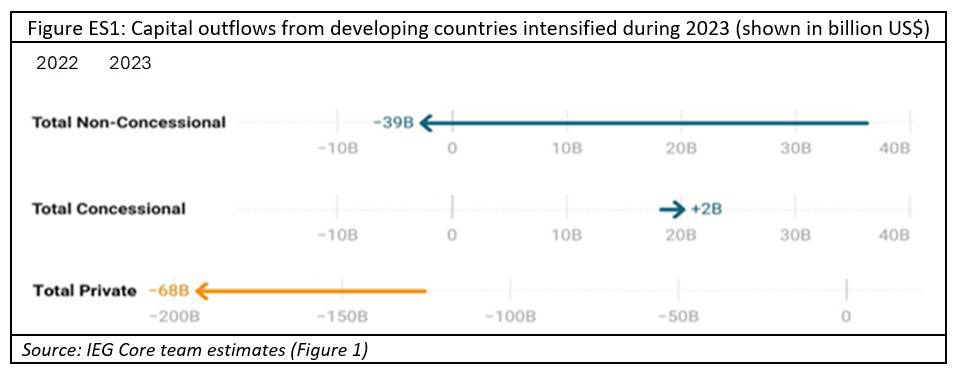From The Polycrisis at Phenomenal World, April 18:

We live in a dysfunctional system in which money flows out of the countries that need it most and into the coffers of the wealthiest. In 2023, the private sector collected $68 billion more in interest and principal repayments than it lent to the developing world. International financial institutions and assistance agencies extracted another $40 billion, while net concessional assistance from international financial institutions was only $2 billion—even as famine spread. The result is that as developing economies make exorbitant interest payments to their creditors, they are forced to cut spending on health, education, and infrastructure at home. Half of the world’s poorest countries are now poorer than they were before the pandemic.
At The Polycrisis we have been tracking the whipsaw of the global financial system amid private finance mantras, interest-rate hikes at the Fed, and the explosion of debt in the global South. In our dispatches on IMF meetings, the Paris conference on debt and climate, the BRICS summit, Barbados, Brussels, Ukraine, and Pakistan, we have sought to throw light on the political economy of financial distress. Who is in need? What do they get from whom, and under what conditions?
The polycentric financial “order”
The World Bank boosted its lending in the wake of the Covid pandemic, but is still well short of meeting the financing needs of developing countries. At the Spring meetings of the IMF and World Bank this week, the question of who adds capital for development, climate resilience, and the energy transition is high on the agenda.
Long-term finance is one thing, but in a crisis, it’s liquidity that counts most—and it can be key to warding off the kind of panic that drives investment away.
In all this, the dollar remains king. Want to make payments? Send an invoice? Store your wealth? Borrow across borders? Chatter about any replacement of the dollar as the dominant reserve currency is overblown. No other contender is willing to run the current-account deficit necessary to be a global reserve issuer. And when a storm arrives, liquidity flows to those with “safe assets” closest to the imperial core, while the burden of “structural adjustment” falls on the poorest and weakest shoulders in each society.
But even so, with US spending stymied by domestic politics, a new set of global players is fronting the cash for states in need of liquidity. Something resembling a polycentric financial patchwork has slowly emerged. We track that emergence here by focusing on the providers of liquidity, the so-called “global financial safety net.”
The global financial safety net is a bricolage, not a formal framework. It consists of central bank swap lines, IMF lines of credit, and regional financing arrangements (RFAs) whereby a group of countries pool their reserves. The fourth component is countries’ own international domestic reserves—sovereign holdings denominated in foreign currency.
Swaps....
countries that need it most and into the coffers of the wealthiest."
If interested see: March 31's "The Purpose Of A System Is What It Does...":